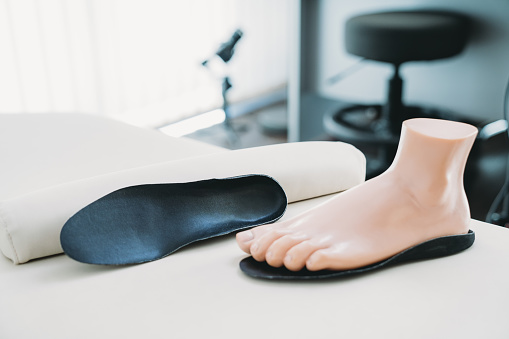Why Do I Need Orthotics For My Shoes?

Orthotics are a type of insoles designed to correct biomechanical and functional problems with your foot. They help alleviate pain and stress by reducing excessive movement. Typically, they are made of foam, gel, or plastic. They can be bought over-the-counter and are often used in sports shoes.
If you’re suffering from foot pain, you should see a health professional. He or she will evaluate your feet and recommend the best type of footwear for you. Your provider may also suggest exercises to help you strengthen your feet. If your pain is caused by a medical condition, your doctor may prescribe medication. A podiatrist can provide a more comprehensive evaluation. He or she may also prescribe a custom-made pair of orthotics.
The main reason to use orthotics is to relieve pain. Misaligned feet can cause painful conditions, including heel pain, ankle instability, and joint pain. In addition, a person with flat feet is at a greater risk for developing many health problems. Aside from the physical discomfort of flat feet, they can lead to muscle imbalances, making it harder to walk and run. If you’re experiencing a lot of pain, consider visiting a podiatrist.
If you have diabetes, you should consider using orthotics Brisbane North because you may not be able to feel the pressure of standard shoes. Diabetics are more likely to suffer from overpronation, which can impact the knees and hips. Depending on the severity of your problem, your health care provider may recommend an orthotic with a firmer, rigid heel. This can keep your foot stable and avoid overpronation.
If you have low arches, your feet are more likely to suffer from misalignment. This can lead to issues with your hips, back, and knees. Your provider may prescribe an orthotic with a higher heel, a wider toe box, or a wider shoe for comfort.
Whether you have a medical condition or not, wearing the right kind of footwear can prevent joint pain. Specifically, people with arthritic joints should be wearing shoes with good circulation, which can promote proper function. If you have a flat foot, you may benefit from a special orthotic with a firmer heel, more cushioning, and a wider toe box.
It’s important to remember that while orthotics can be effective in treating pain, they are not inherently safe. They can cause complications, such as overcorrection or even injury. They can restrict the selection of footwear, and can be uncomfortable for a while. For this reason, it’s important to consult a physician if you have a specific condition. Until you know for sure that you need orthotics, be cautious of anyone who wants to sell you a pair.
If you’re worried about the safety of wearing a pair of orthotics, you may want to try a shoe insert. These are available over-the-counter, and may be just as effective as a prescription. In fact, they can be used to treat general foot discomfort. They are made from either foam or gel, and come in various sizes.



